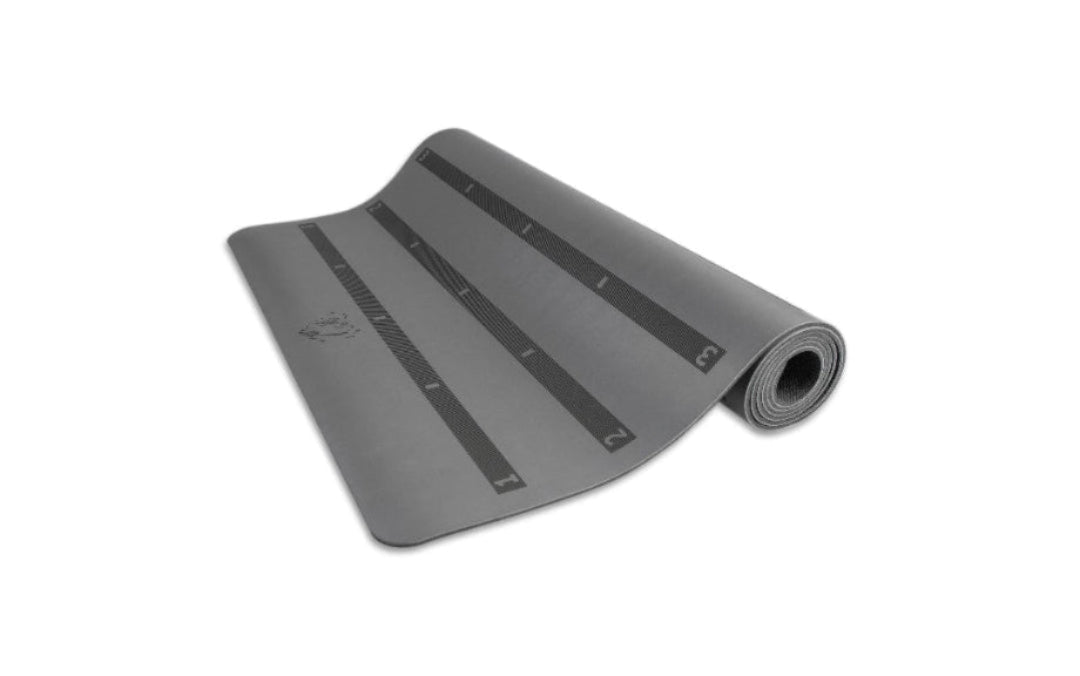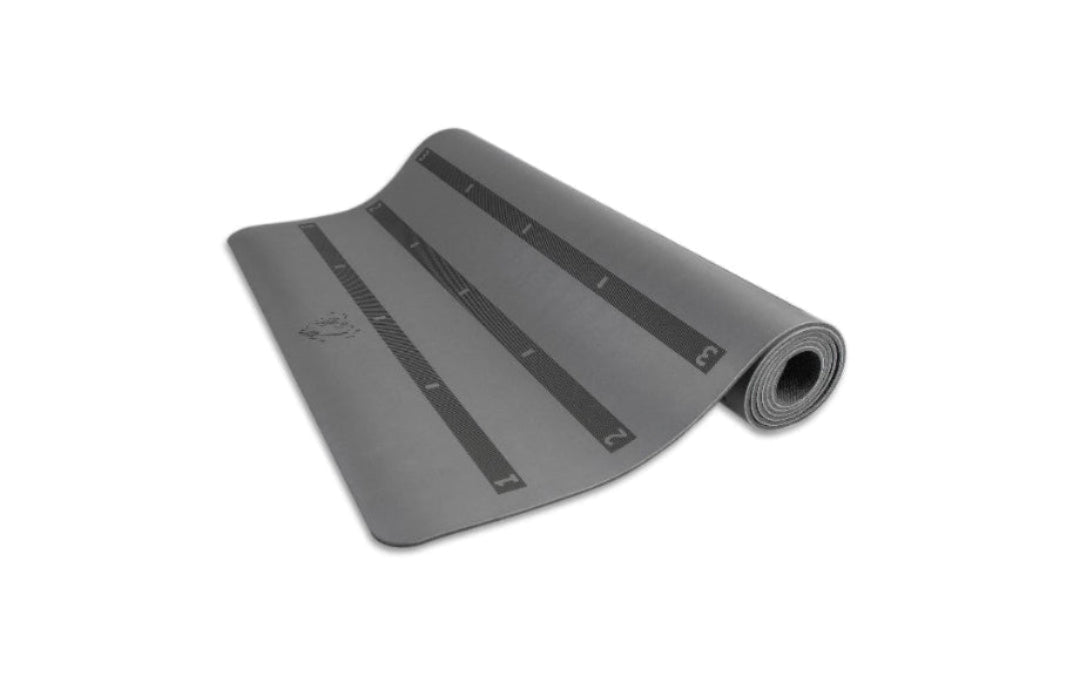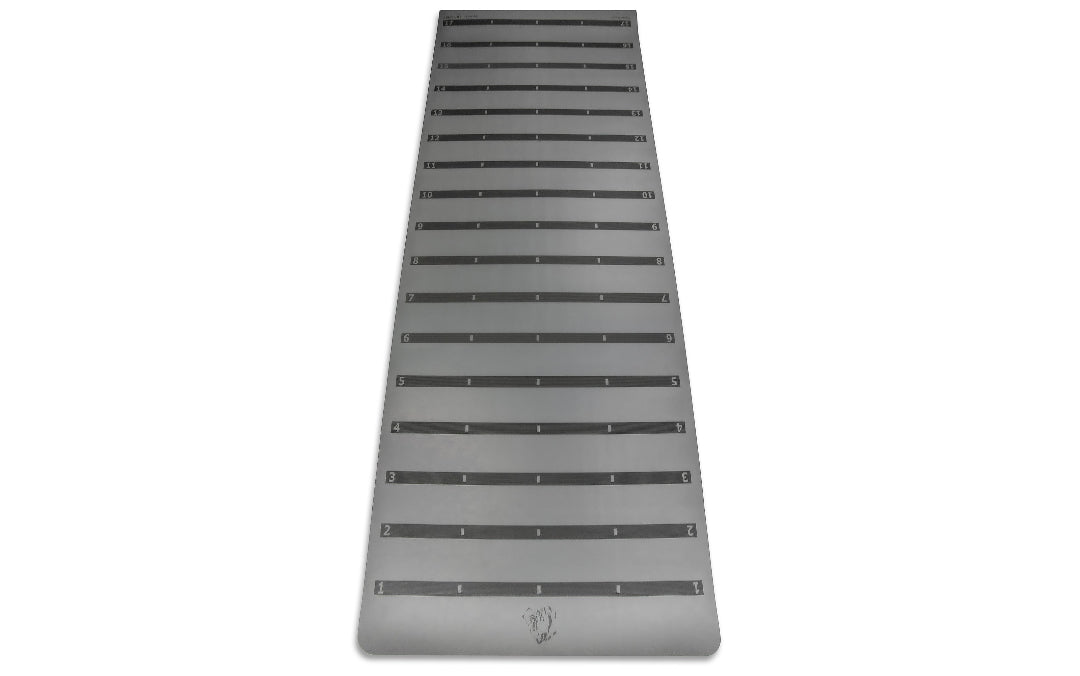Hello Fellow Researchers!
Today, we are reviewing Giancotti, Fusco, Varalda, Capelli, and Cortis (2019) and its implications surrounding the Suspended Row.
What Did The Researchers Test?
The research team wanted to investigate the body angle and ground reaction force it generated at different positions of a Suspended Row. The researchers did this by using 7 different strap-lengths from 148 cm to 208 cm while the participants' feet were directly under the anchor.

The researchers also inspected two elbow positions for each strap-length: “extended” referred to the starting position for the Suspended Row and “flexed” represented the midpoint or high position of the exercise.

In addition, they had a force platform to measure the ground reaction force (or weight) the participants’ feet applied to the ground, and motion analysis software to evaluate the body angles for all 14 variations (which is represented by the blue pad in each of the pictures).
Difference Between Body Angles
The results showed that the shorter the strap-length, the closer the body angle was towards vertical, and the more of the weight of the participant was directed to the feet and applied to the floor. For example, on average, when the strap-length was 208 cm, the body angle was 6 degrees, with the feet applying 32% of the participant’s weight into the ground. But when the strap-length was 148 cm, the body angle was 36 degrees, with feet applying 47% of the weight into the ground.

With the average weight of an adult at 180 lb (or 82 kg), the difference between the two extremes is 27 pounds (or 12 kgs).
The Inverse of Ground Reaction Force = Intensity
As mentioned previously, the force platform measured the weight that was applied to the floor during a Suspended Row. However, as noted in the study, that weight is not the amount used by the intended working muscles. Returning to the first example where the strap-length was 208 cm, the force platform measured 32% of the body weight. This means that, at 208 cm, the participant could use the remaining 68% of their body weight in their upper body for the Suspended Row. In the second example where the strap-length was 148 cm, the force platform measured 47% of the body weight and this means that, at that same length, the participant could use 53% of their body weight for the Suspended Row.

Extended vs. Flexed
One interesting finding within the study is the difference in percentage of weight for the Suspended Row between the extended elbow position (i.e. the start/end-point of the exercise) and the flexed elbow position (i.e. the mid-point). Using the 208 cm strap-length example, the percentage of body weight that could be utilized for the Suspended Row in the extended elbow position was 68%, but only 62% when in the flexed elbow position.

This makes a difference of 6% of body weight between the mid- and end-points of the Row for this length. These fluctuations were observed at each strap-length and demonstrated that the resistance of suspension exercises are more dynamic and fluid than previously considered.
How to Change Intensity
From the analysis of the 14 positions, this study aligns really well with another study we reviewed, Melrose & Dawes (2015), and both demonstrate that the body angle is the major factor for how intense a standing suspension exercise will be. But as discussed previously, almost all suspension exercises are prescribed a strap-length and the suspension straps typically have only two markings, which makes the measuring of strap lengths tedious and can lead to inconsistencies. Since those factors are restricted or limited, the best way to measure the intensity of a standing suspension exercise is to measure the distance between your feet and where the straps are hanging from. The closer your feet are to the anchor, the closer your body angle is to the floor, and the greater the intensity.

Models & Equations
Giancotti et al. (2019) also created two different models and a number of different equations for the Suspended Row with the end products being the estimated ground reaction force, and the estimated body angles at different elbow positions. The main difference between the two models is that one incorporates body angle, while the other uses the strap-length. The other variables include: the participant’s body mass, body mass index, and height, as well as elbow position and ground reaction force. These models and equations can be helpful in determining certain aspects surrounding the Suspended Row, with at least one not requiring the involvement of technical equipment to get specific data, making it more user-friendly.
Conclusion & Recommendations for the Suspended Row
Based on the study, the strap-length for a particular suspension exercise should be consistent from session to session so the intensity of the exercise is the same when performed at the same distance. For example, switching from Mid-Length to Shortened (which are the two most common lengths for the Row) is the difference of 6-8 pounds of resistance.

By extension, even with a consistent strap-length, the body angle determines level of intensity. The most practical way to change your body angle and (per this study) change the amount of weight (and intensity) for that exercise is to move your feet toward or away from the anchor, and be sure to record that distance so you know you’re making progress over time.

Thank you for reading, and please subscribe to be notified about additional articles. If you'd like to read the study for yourself, a link to the entire study below:





